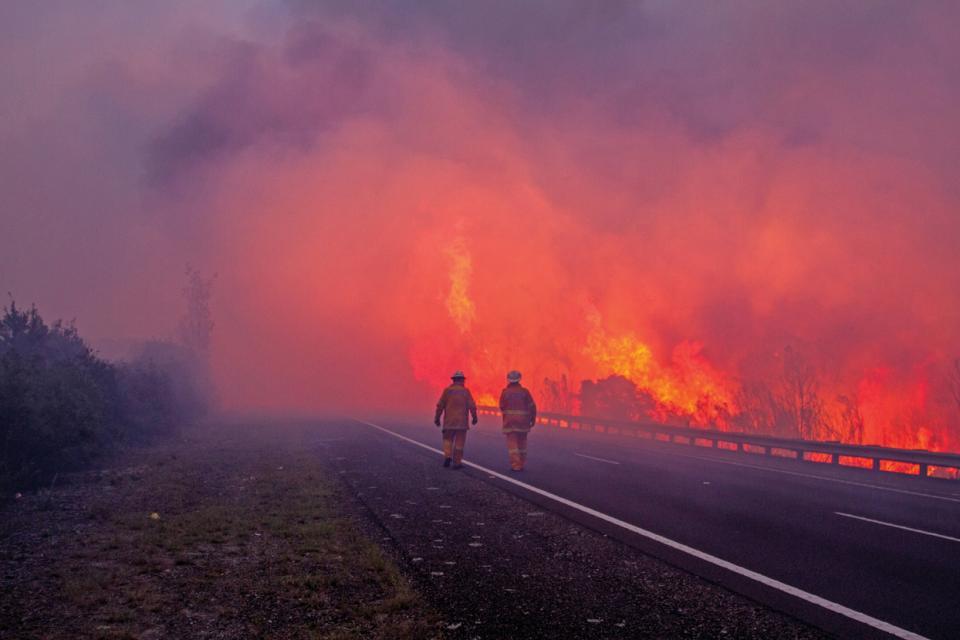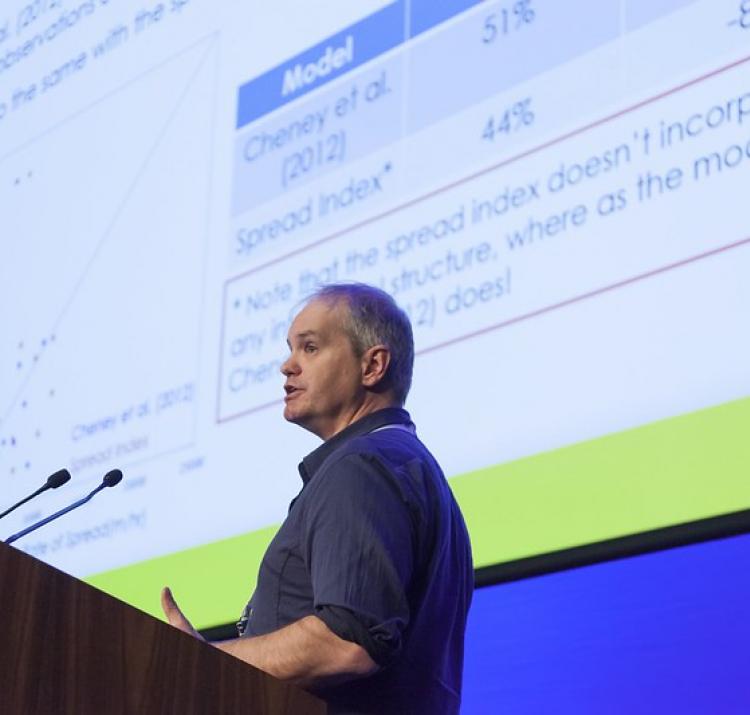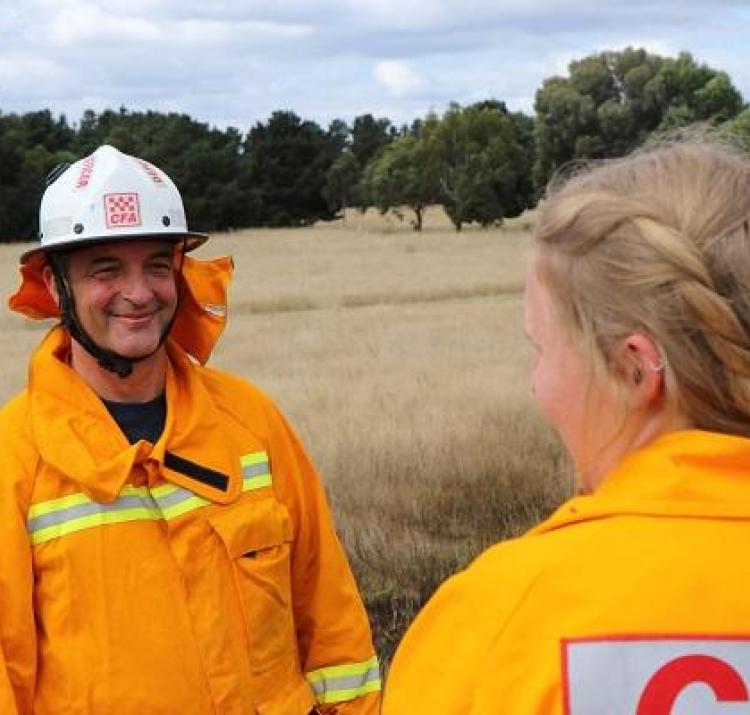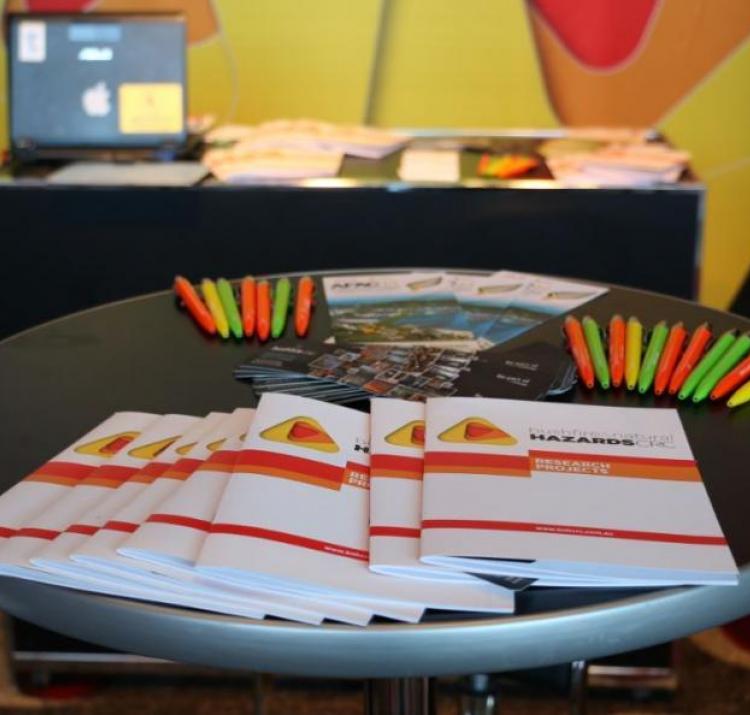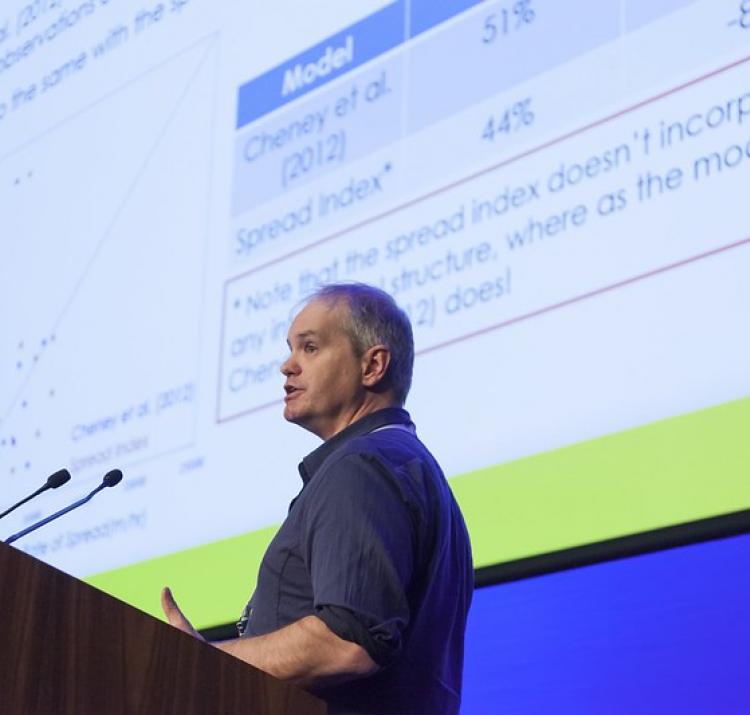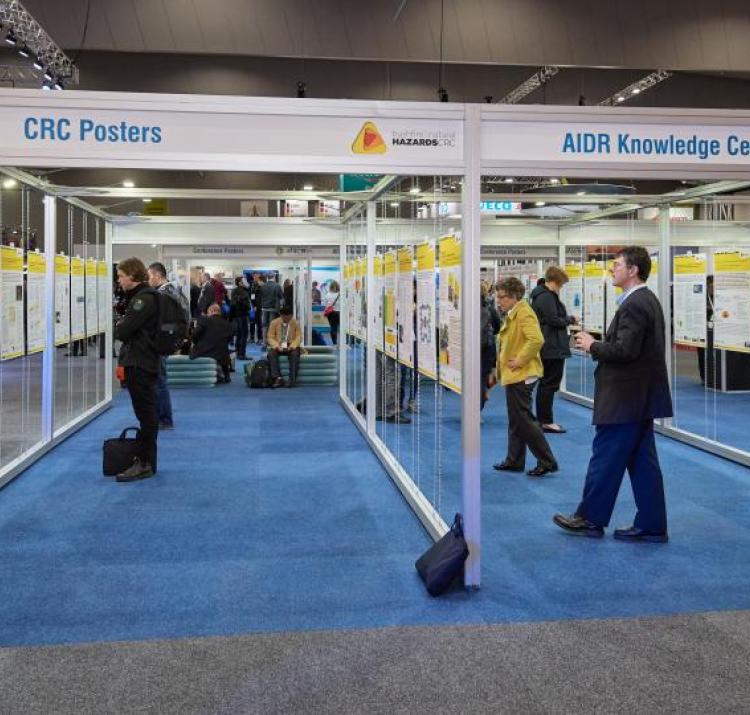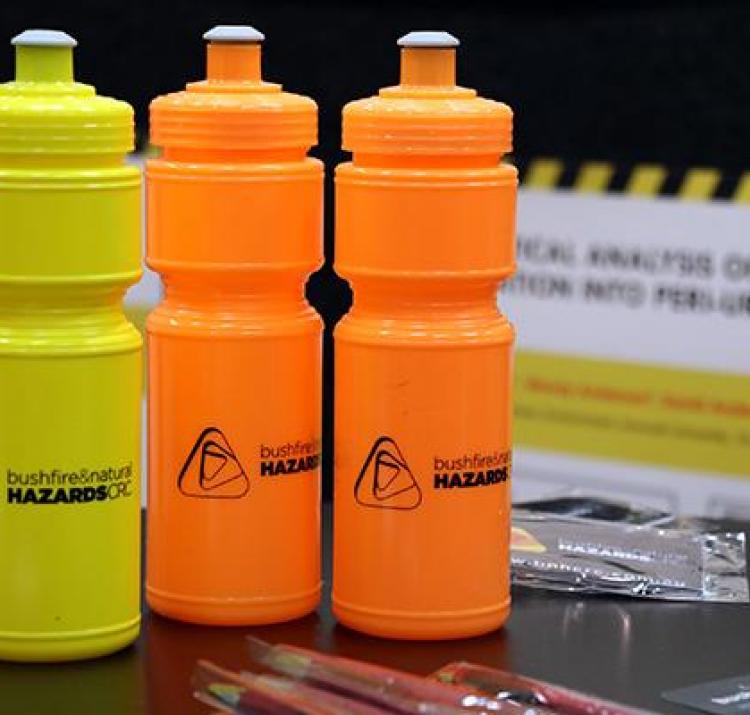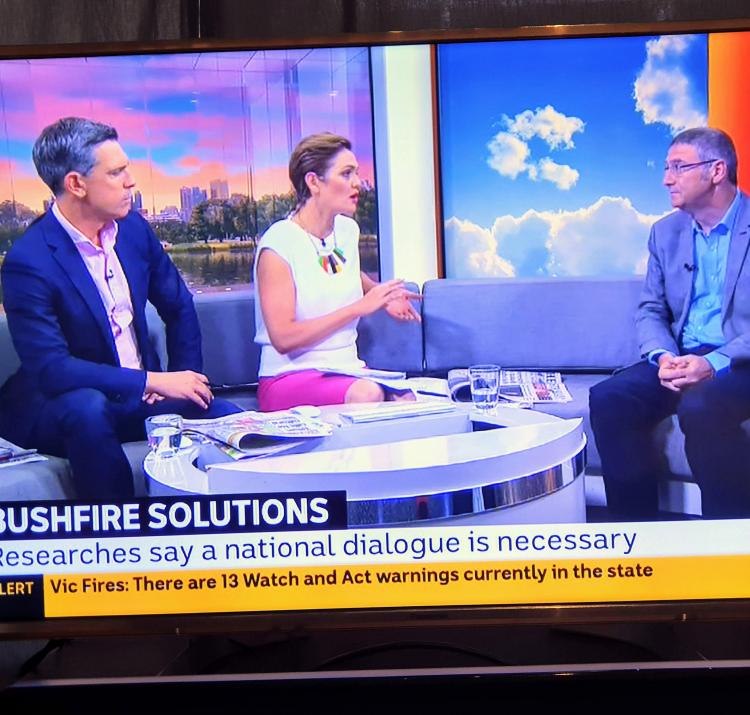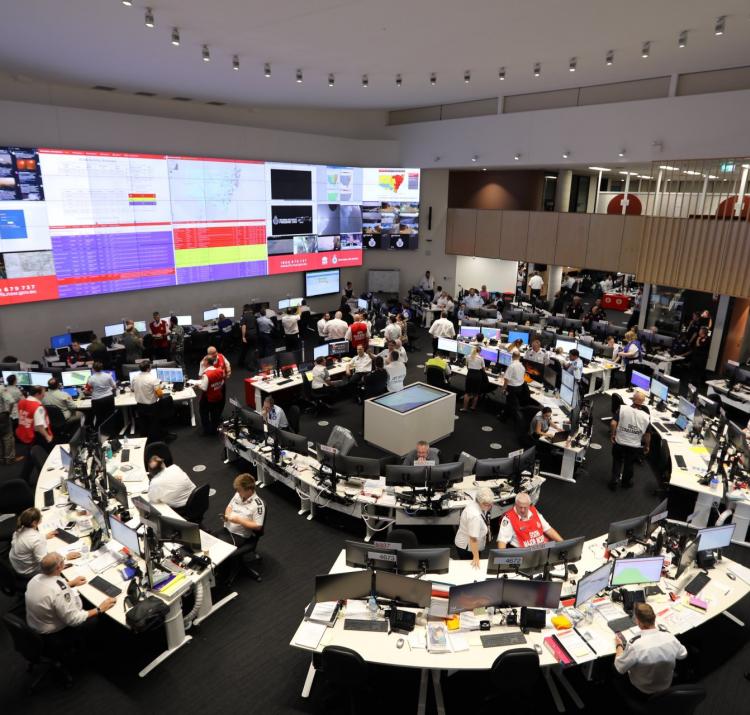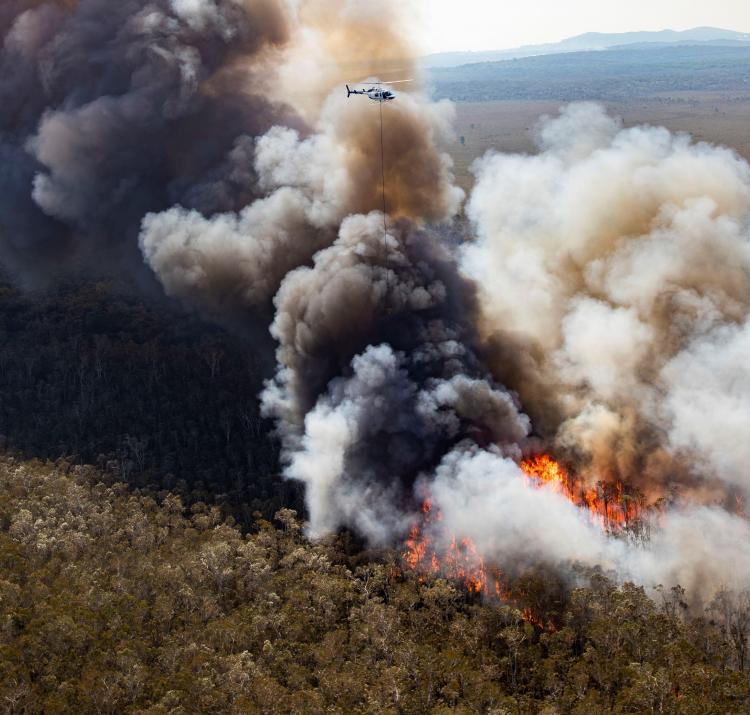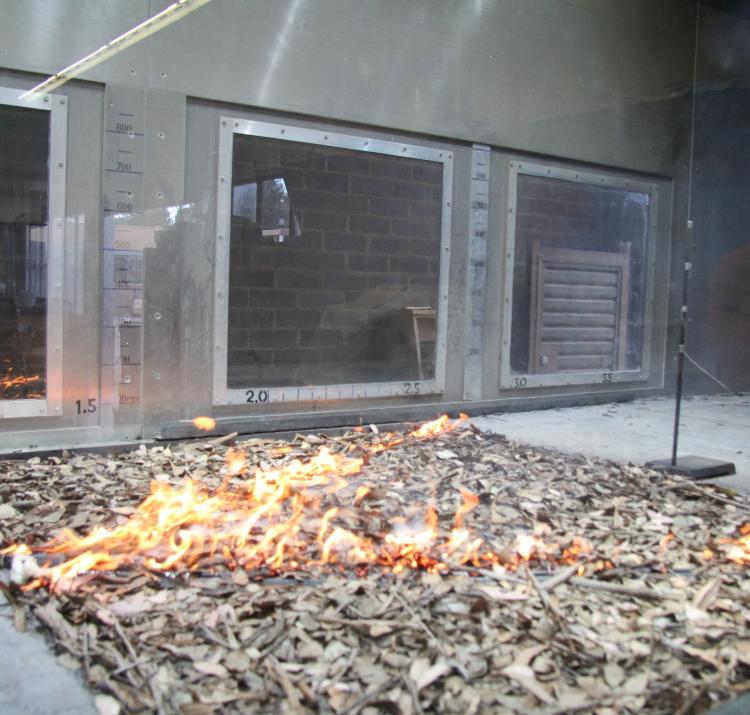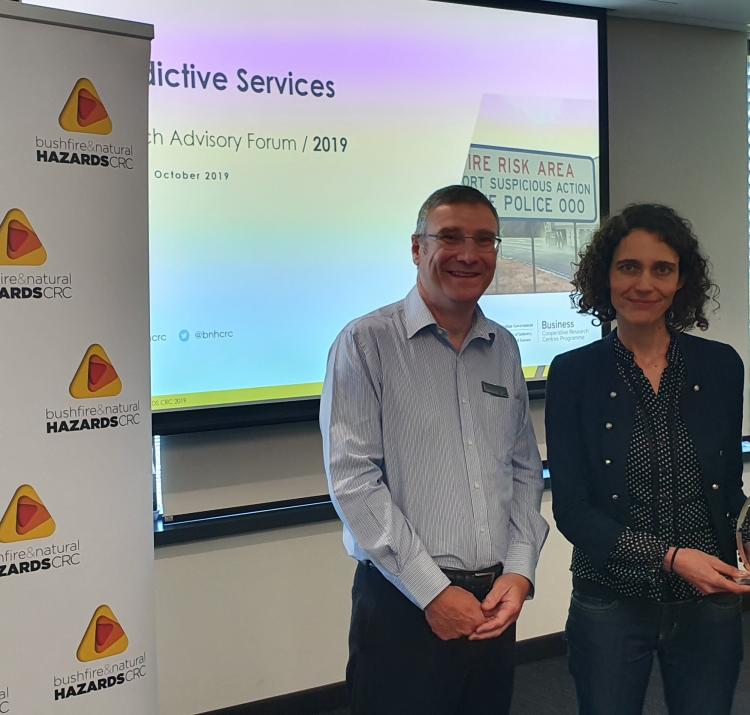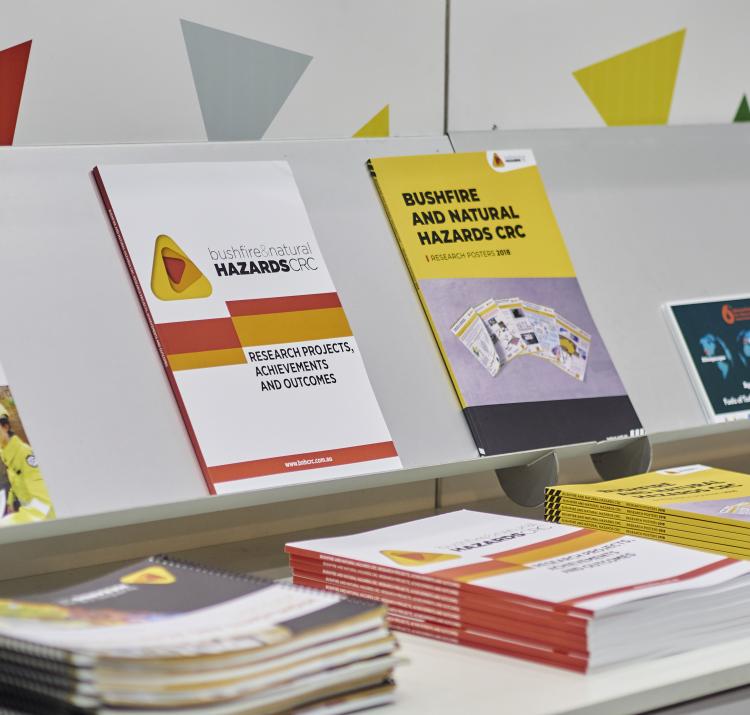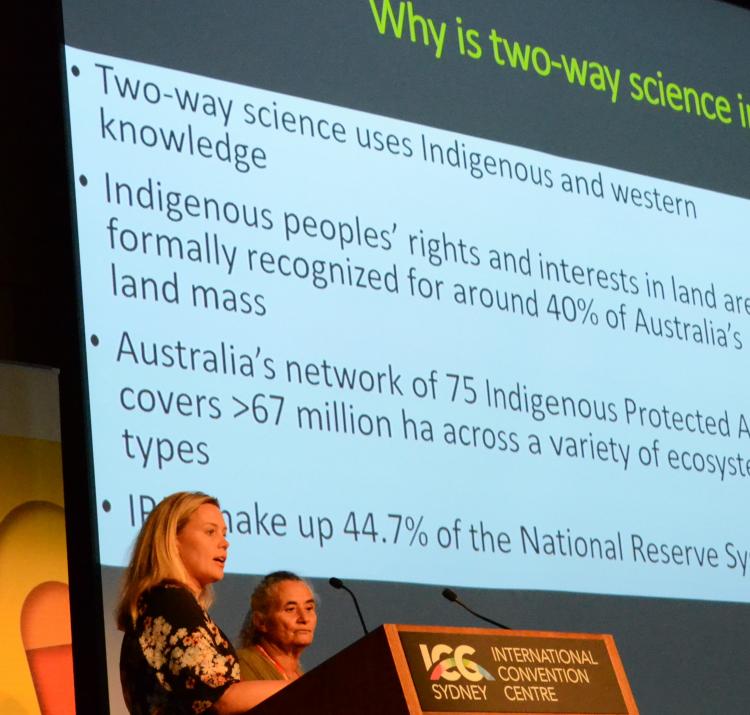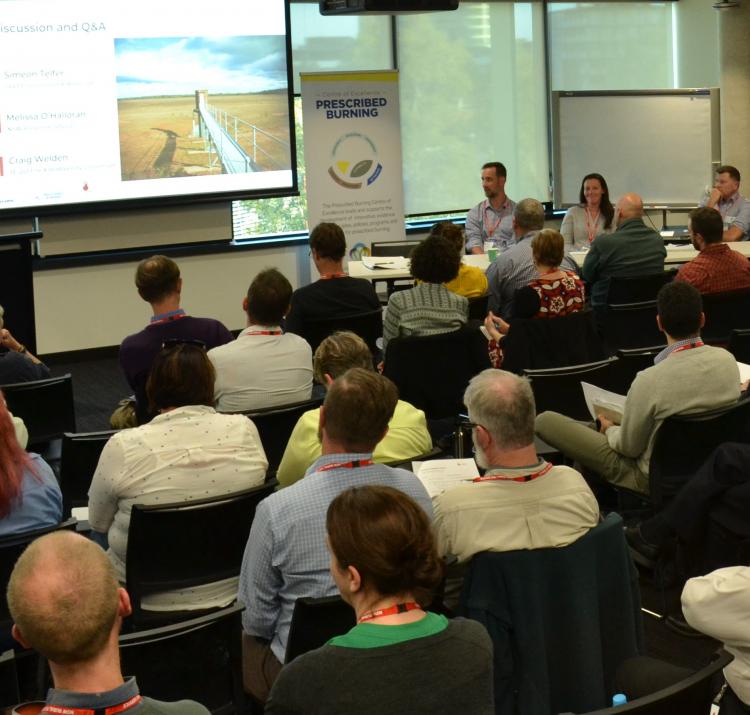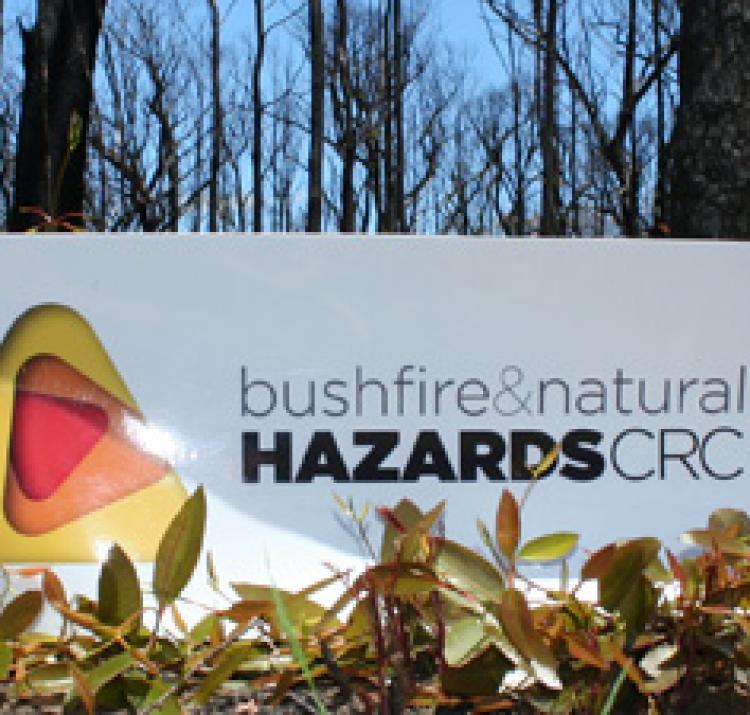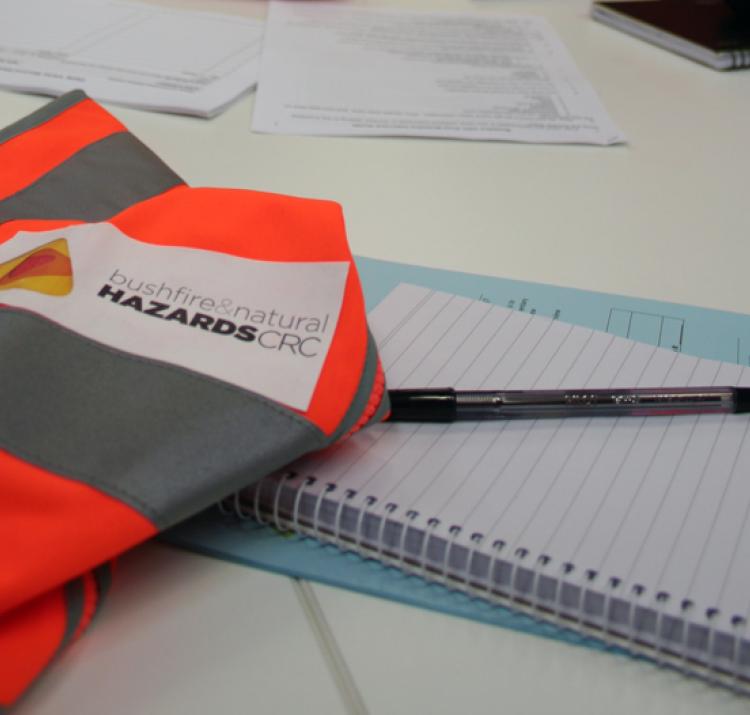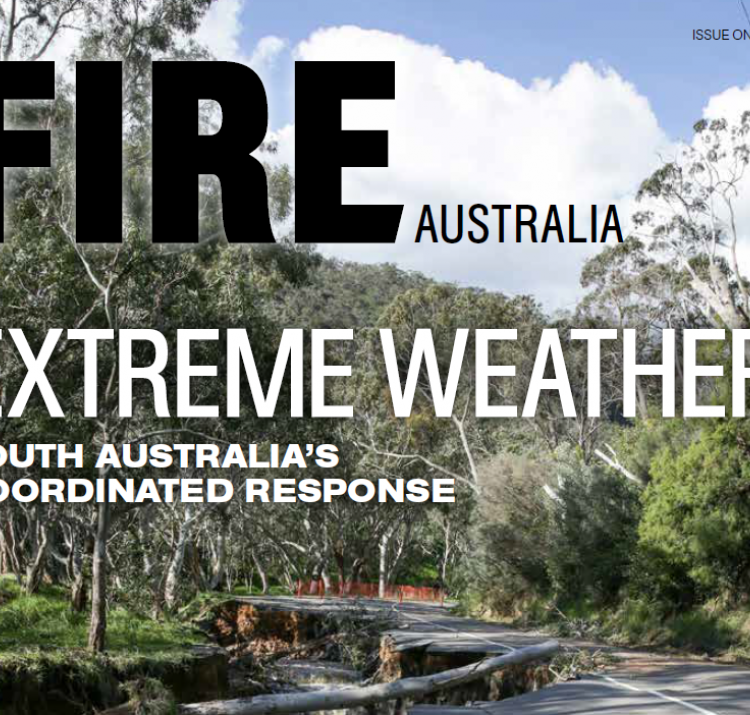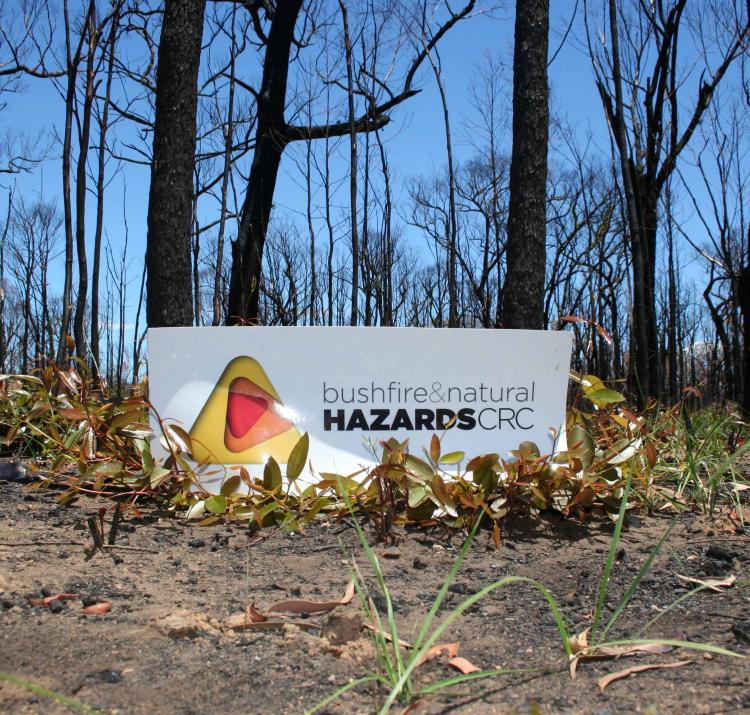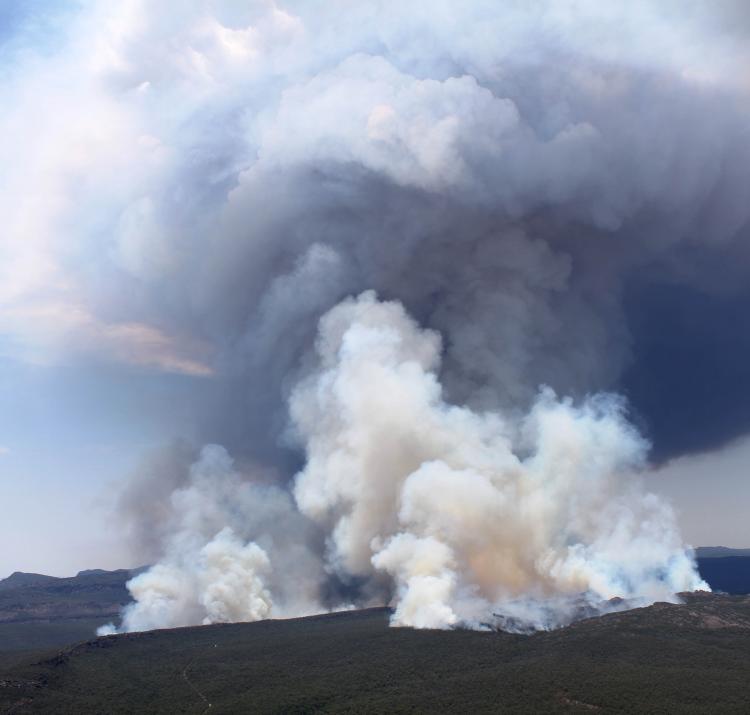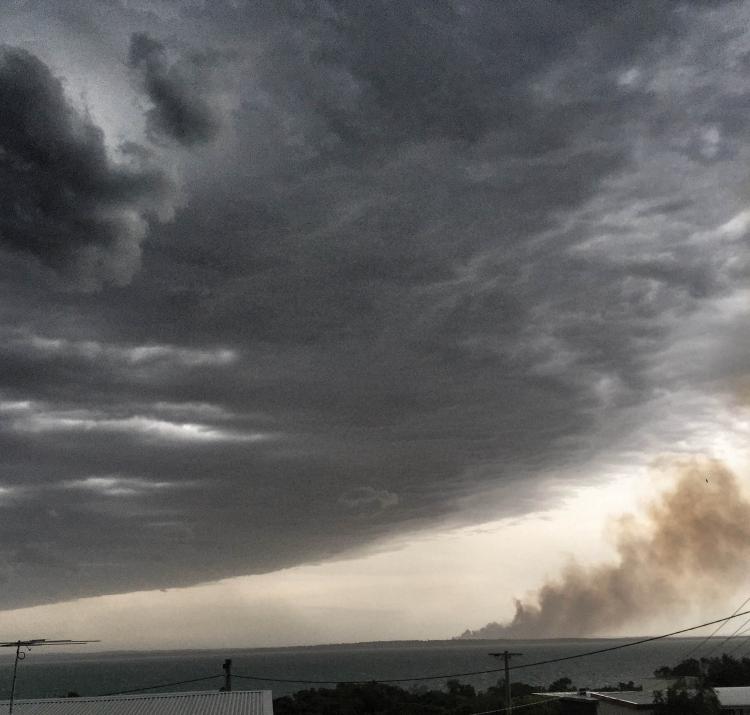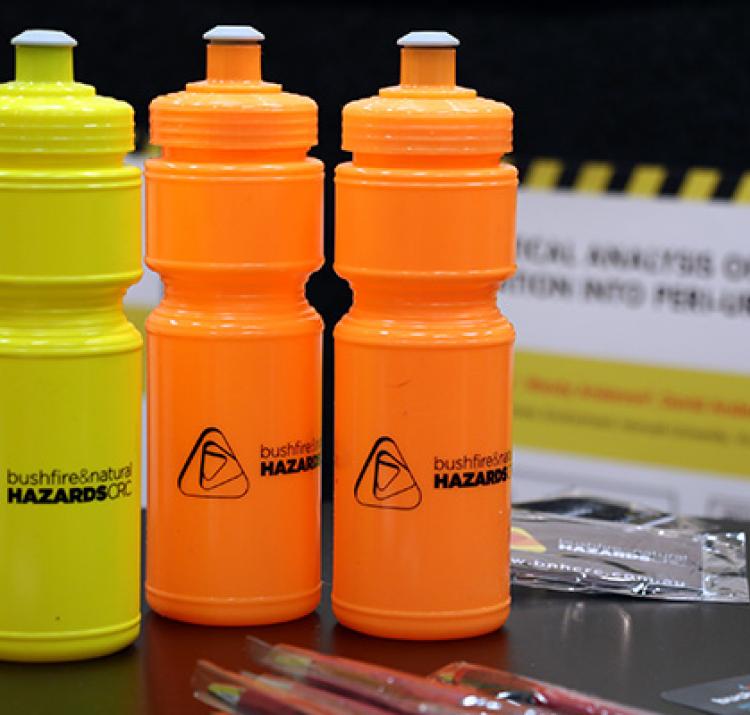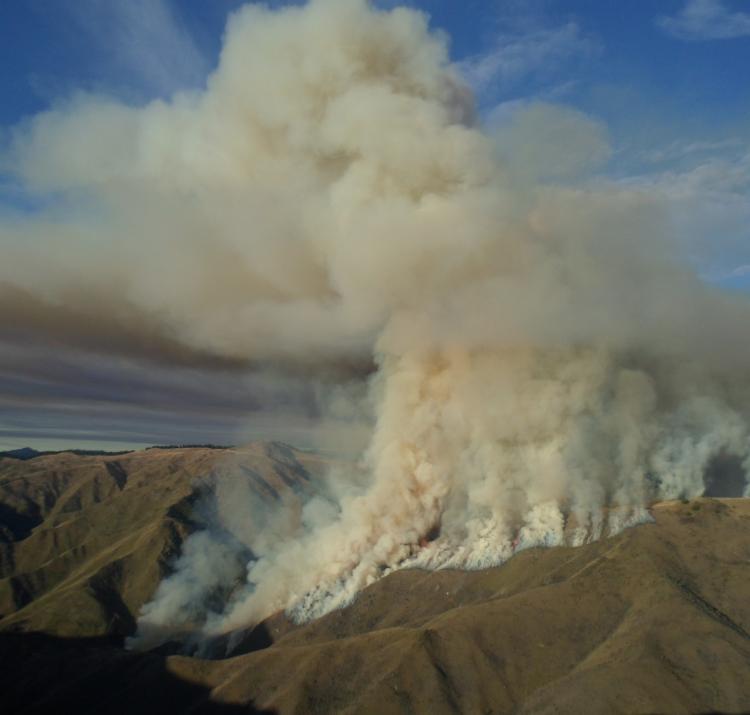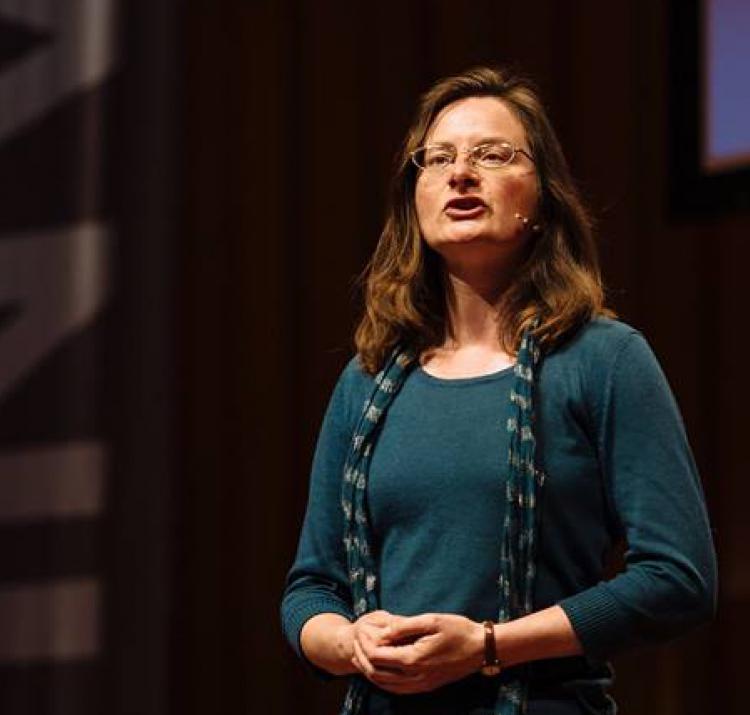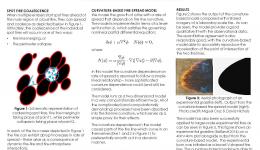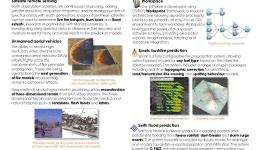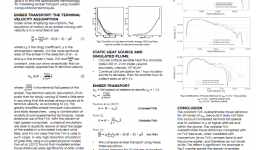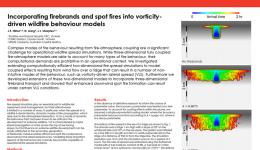Research leader
Research team
End User representatives
Student researchers
Fire behaviour in dry eucalypt forests in Australia is characterised by the occurrence of spotfires—new fires ignited by the transport of embers ahead of an existing fire. Under most burning conditions, spotfires play little role in the overall propagation of a fire, except where spread is impeded by breaks in fuel or topography. Spotfires allow these impediments to be overcome.
However, under conditions of severe bushfire behaviour, spotfire occurrence can be so prevalent that spotting becomes the dominant propagation mechanism and the fire spreads as a cascade of spotfires forming a ‘pseudo’ front.
It has long been recognised that the presence of multiple individual fires affects the behaviour and spread of all fires present. The converging of separate individual fires into larger fires is called coalescence and can lead to rapid increases in fire intensity and spread rate, leading to the phenomenon of a ‘fire storm’. This coalescence effect is frequently used in prescribed burning, with multiple point ignitions used to rapidly burn out large areas.
This project is focusing on:
- Fire coalescence to provide better predictions of fire propagation
- The intrinsic dynamics of flame front propagation as a contributor to fire spread across different spatial and temporal scales
- Within a simulation framework an end-to-end model of the behaviour of mass spotfires, from firebrand/ember launch to fire coalescence.
The modelling and simulation aspects of the project have contributed to understanding the processes that drive fire coalescence and dynamic fire spread. In particular, the research has addressed the role that fire-line geometry (especially curvature) plays in the dynamic propagation of bushfires.
The team has demonstrated the performance advantages of fire propagation models incorporating curvature dependence when applied to simple wind-driven fires at both laboratory and field scales. The research has also produced fundamental insights into how the shape of the fire line affects the dynamic behaviour of the fire as a whole. Coupled fire-atmosphere modelling was used to investigate how fire-induced air movements (pyroconvection) can produce significantly enhanced rates of spread for certain fire shapes.
Utilising the research outcomes will include development of education and training materials relating to dynamic fire behaviour and extreme fire development, which will incorporate the research findings on fire coalescence and mass spotfires.
Research findings will also be used to develop metrics of relevance to the National Fire Danger Rating Project. In particular, existing measures of ‘convective fire power’ based solely on information relating to the fire perimeter will be extended to include contributions from within flaming zones where spot fire coalescence can contribute significantly to pyroconvective release.
| Year | Type | Citation |
|---|---|---|
| 2024 | Report | Wind terrain filters for VLS prone landscapes - utilisation training manual. 23 (Bushfire and Natural Hazards CRC, 2024). |
| 2023 | Report | Fire coalescence and mass spot fire dynamics - final project report. (Natural Hazards Research Australia, 2023). |
| 2022 | Report | Spotfire utilisation project: implementation of the VLS filter. (Bushfire and Natural Hazards CRC, 2022). |
| 2021 | Journal Article | A response to comments of Cruz et al. on: ‘Simulation study of grass fire using a physics-based model: striving towards numerical rigour and the effect of grass height on the rate of spread’. International Journal of Wildland Fire (2021). doi:https://doi.org/10.1071/WF20091 |
| 2021 | Journal Article | Modulating influence of drought on the synergy between heatwaves and dead fine fuel moisture content of bushfire fuels in the Southeast Australian region. Weather and Climate Extremes 31, (2021). |
| 2021 | Journal Article | Initial growth of fires in eucalypt litter, from ignition to steady-state rate of spread: laboratory studies. International Journal of Wildland Fire (2021). doi:https://doi.org/10.1071/WF21094 |
| 2021 | Journal Article | Interactive influence of ENSO and IOD on contiguous heatwaves in Australia. Environmental Research Letters (2021). doi:https://doi.org/10.1088/1748-9326/ac3e9a |
| 2020 | Journal Article | Modeling Vorticity-Driven Wildfire Behavior Using Near-Field Techniques. Frontiers in Mechanical Engineering (2020). doi:https://doi.org/10.3389/fmech.2019.00069 |
| 2020 | Journal Article | Effect of weather forecast errors on fire growth model projections. International Journal of Wildland Fire (2020). doi:https://doi.org/10.1071/WF19199 |
| 2020 | Report | Fire coalescence and mass spot fire dynamics: experimentation, modelling and simulation - Annual project report 2018-2019. (Bushfire and Natural Hazards CRC, 2020). |
| 2020 | Report | Deconstructing factors contributing to the 2018 fire weather in Queensland, Australia. Explaining Extreme Events of 2018 from a Climate Perspective 101, S15-S21 (2020). |
| 2020 | Report | Fire coalescence and mass spot fire dynamics: experimentation, modelling and simulation – annual project report 2019-2020. (Bushfire and Natural Hazards CRC, 2020). |
| 2019 | Conference Paper | Incorporating firebrands and spot fires into vorticity-driven wildfire behaviour models. 23rd International Congress on Modelling and Simulation (2019). doi:https://doi.org/10.36334/modsim.2019.H7.hilton2 |
| 2019 | Conference Paper | Wind-terrain effects on firebrand dynamics. 23rd International Congress on modelling and Simulation (2019). doi:https://doi.org/10.36334/modsim.2019.H7.hilton |
| 2019 | Journal Article | A Statistical Approach to Understanding Canopy Winds over Complex Terrain. Environmental Modeling & Assessment 1-20 (2019). doi:https://doi.org/10.1007/s10666-019-09674-w |
| 2019 | Journal Article | Climate Change Increases the Potential for Extreme Wildfires. Geophysical Research Letters 46, 8517-8526 (2019). |
| 2018 | Conference Paper | Research proceedings from the 2018 Bushfire and Natural Hazards CRC and AFAC Conference. Bushfire and Natural Hazards CRC & AFAC annual conference 2017 (Bushfire and Natural Hazards CRC, 2018). |
| 2018 | Conference Paper | Pyroconvective interactions and dynamic fire propagation. AFAC18 (2018). |
| 2018 | Journal Article | Estimating grassland curing with remotely sensed data. Natural Hazards and Earth System Sciences (2018). doi:10.5194/nhess-18-1535-2018 |
| 2018 | Journal Article | Analysis of the physical processes associated with junction fires at laboratory and field scales. International Journal of Wildland Fire 27, (2018). |
| 2018 | Journal Article | How do weather and terrain contribute to firefighter entrapments in Australia?. International Journal of Wildland Fire 27, 85-98 (2018). |
| 2018 | Journal Article | What are the drivers of dangerous fires in Mediterranean France?. International Journal of Wildland Fire 27, 155-163 (2018). |
| 2018 | Journal Article | Incorporating convective feedback in wildfire simulations using pyrogenic potential. Environmental Modelling & Software 107, 12-24 (2018). |
| 2017 | Conference Paper | A unified approach to fire spread modelling. AFAC17 (Bushfire and Natural Hazards CRC, 2017). |
| 2017 | Conference Paper | What are the safety implications of dynamic fire behaviours?. 22nd International Congress on Modelling and Simulation (2017). |
| 2017 | Conference Paper | Research proceedings from the 2017 Bushfire and Natural Hazards CRC and AFAC Conference. Bushfire and Natural Hazards CRC & AFAC annual conference 2017 (Bushfire and Natural Hazards CRC, 2017). |
| 2017 | Report | Fire coalescence and mass spotfire dynamics - experimentation, modelling and simulation: annual project report 2016-17. (Bushfire and Natural Hazards CRC, 2017). |
| 2016 | Journal Article | Natural hazards in Australia: extreme bushfire. Climatic Change 139, 85-99 (2016). |
| 2016 | Journal Article | Curvature effects in the dynamic propagation of wildfires. International Journal of Wildland Fire 25, (2016). |
| 2016 | Report | Fire coalescence and mass spot fire dynamics: experimentation, modelling and simulation: Annual project report 2015-2016. (Bushfire and Natural Hazards CRC, 2016). |
| 2015 | Presentation | Dynamic modelling of fire coalescence. (2015). |
| 2015 | Report | Fire coalescence and mass spotfire dynamics: Experimentation, modelling and simulation - Annual project report 2014-2015. (Bushfire and Natural Hazards CRC, 2015). |

